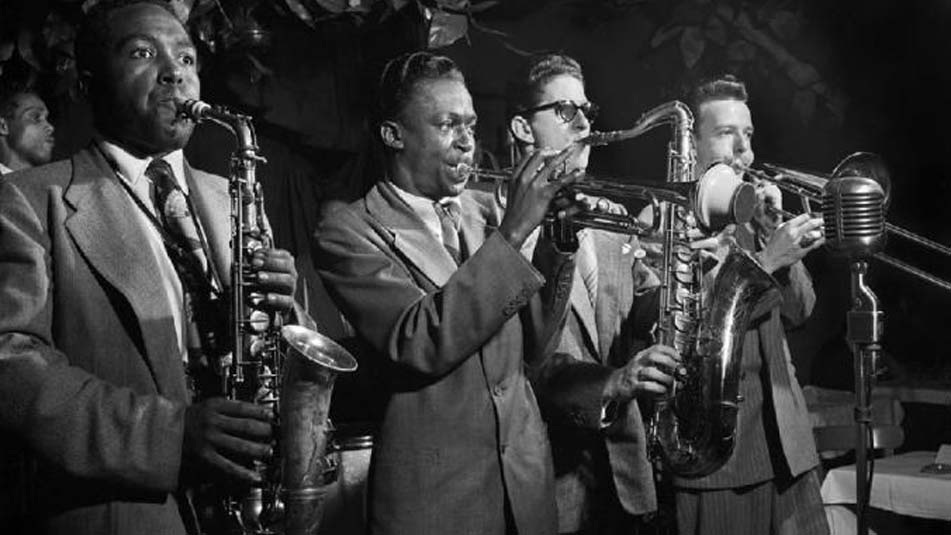Intro.
The 1940s and 50s were full of significant changes. The United States had become involved in World War II, women were now entering the workforce due to the absence of men, and the Civil Rights movement was beginning to spark. It makes sense, then, that people were looking for a new soundtrack for their lives. They were tired and bored of the commercialized Swing/Big Band Jazz sound of the 30s. Black musicians, in particular, were ready to break out of the formulaic box of Swing Jazz into something never before seen. As a result, in after-hour “jam sessions” in New York clubs, bebop was born. Bebop is a revolutionary jazz genre that was reflective of the innovative and progressive mindset of the Black community post-World War II.
Bebop. What is it?
Bebop is a subgenre of jazz that can be categorized by multiple improvisational solos, fast tempos, and loudness. Bebop musicians wanted to change their sound from the repetitiveness of Swing Jazz drastically, so they played at faster tempos, making dancing difficult; a prominent social aspect of Swing. Bebop has been described as having modernism and intellectualism written all over it. Charlie Parker’s song, “Bebop”, is a wonderful example of this.
Defying the Stereotype.
Not only were bebop musicians trying to break preconceptions about jazz music but also about the people who made the music. In the mid-1900s, segregation was thriving, and it was built upon the lie that Black people and other people of color were inferior to their white counterparts. Many white people would go as far as to say that Black people were inferior physically and intellectually. There were many stereotypes and images in the media of Black people that portrayed them as stupid, childlike, and unsophisticated.


Bebop’s aim was to dismantle this belief. The music was musically complex and detailed with many moving parts. The creators of bebop wanted their audience to listen to the conversation of the instruments and decipher the meaning. This was a direct slap in the face of racism and segregation that argued that Black people were incapable of such depth and complexity.
The very image of Bebop defied stereotypes. It was common for instrumentalists to wear berets, and glasses, and to have goatees; this communicated a sense of sophistication and modernity. The musicians were known to talk about complex matters with an expansive vocabulary as well. The mere image of Bebop broke preconceptions of Black people before a note was even played.
Conclusion.
Listen to John Coltrane’s song, “A Love Supreme.” This is the first movement of four about his spiritual journey and its highs and lows. As one can note, this defers significantly from the predictable nature of Swing, and the meaning has much depth. It was actions and music like this that kept the flame of the Civil Rights Movement burning throughout the 20th century. Bebop is the musical demonstration of Black creativity and defiance that pushed listeners to connect with the music beyond what they heard.


